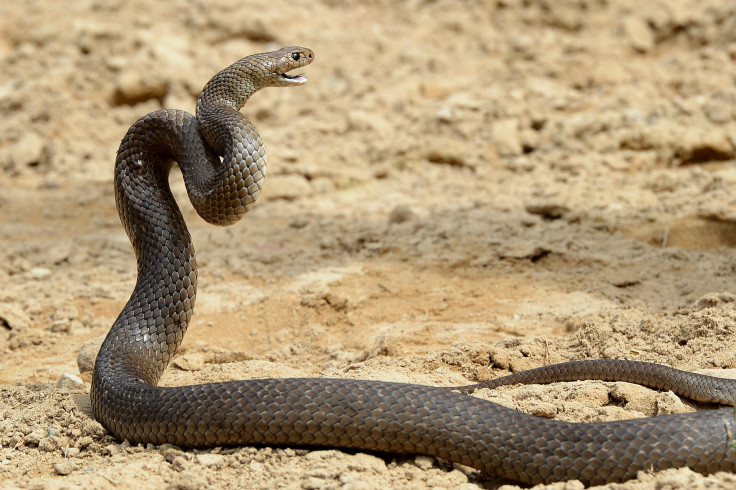Venomous Humans? Study Finds We May Have The Genes To Turn 'Toxic'
KEY POINTS
- Researchers wanted to find the origins of oral venom
- They found humans and snakes share genes that are key to evolving venom
- It provides the first evidence that venom glands have evolved from salivary glands
Is it possible for humans to ever be venomous? A team of researchers has found evidence in our genomes that suggest we may actually have the potential.
Many animals, from snakes to jellyfish and even the shrew, have venom, which often used to capture prey or for self-defense. The most common means of delivering venom is through bites. However, the exact origin of oral venom remains unclear.
In a new study, published in PNAS, a team of researchers sought to find the origins of oral venom. To do this, they looked at the genes that work "alongside and interact" with venom genes, instead of the toxins in the venom itself, the Okinawa Institute of Science and Technology Graduate University (OIST) said in a news release.
"(M)any of the toxins currently found in venom were incorporated after the oral venom system was already established," study first author and doctoral student, Agneesh Barua of OIST, said in the release. "We needed to look at the genes that were present before venom's origin, genes which enabled the rise of venom systems."
The 'metavenom network'
For their study, the researchers focused on the genome of the Taiwan habu, a brown pit viper that's considered an invasive species in Okinawa, Japan. They identified a network of over 3,000 genes that co-expressed with the toxins and played an important role in protecting the cells from the stress of creating a lot of proteins. Venom is made of proteins, Live Science noted.
This gene network, which the researchers dubbed the "metavenom network," is also important in protein folding and modification.
"The role of these genes in the unfolded protein response pathway makes a lot of sense as venoms are complex mixtures of proteins," Barua explained. "So to ensure you can manufacture all these proteins, you need a robust system in place to make sure the proteins are folded correctly so they can function effectively."
Snake and mammal genes
The researchers' next step made the study even more interesting: they looked at the genome of other animals, including mammals such as chimpanzees, dogs and even humans.
The team found that the other creatures, including humans, also had their own version of the genes. In mammals, the genes have a "pattern of activity" in the salivary gland tissues that's similar to the activity in snake venom glands, OIST said.
This means the researchers not only found the first direct evidence that venom glands evolved from salivary glands, but also that mammals and snakes had the "crucial foundation" for evolving venom.
Although there are mammals that are known to produce venom, like shrews and vampire bats, the latest work presents mammal venom in a whole new light.
"As a result, the evolution of toxicity in vertebrate saliva may be more common than currently recognized, and the line between vertebrates with and without oral venoms much less clear," the researchers wrote.
Venom in humans?
"Essentially, we have all the building blocks in place," Barua said, according to Live Science. "Now it's up to evolution to take us there.
It means humans are actually equipped to become venomous. The ecological conditions to develop this, however, are "very unlikely," OIST said.
"It definitely gives a whole new meaning to a toxic person," Barua joked.

© Copyright IBTimes 2024. All rights reserved.






















